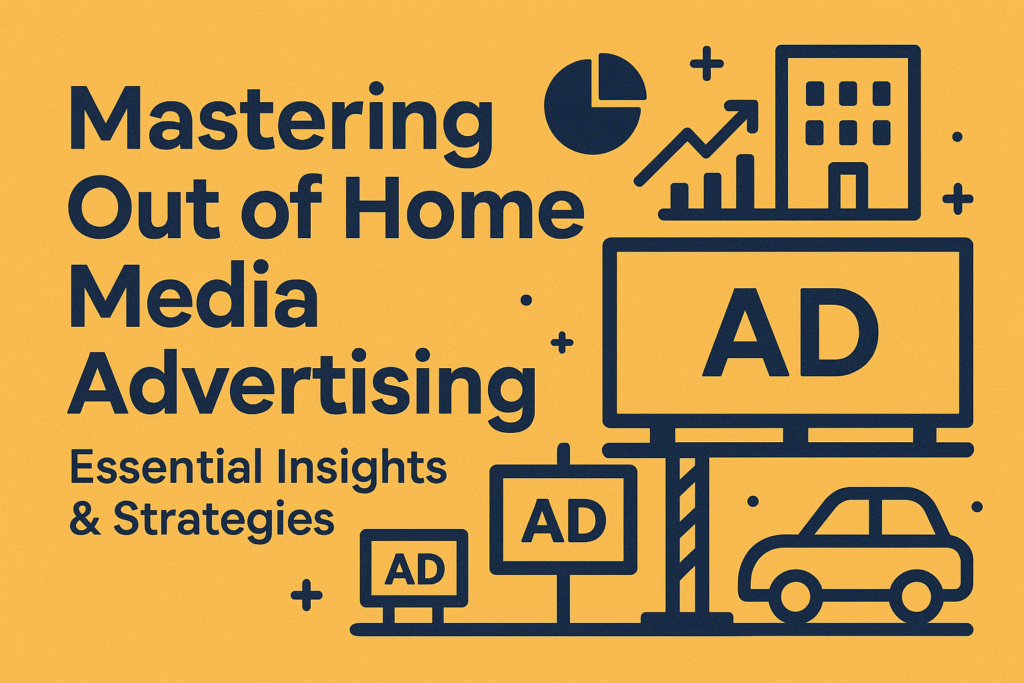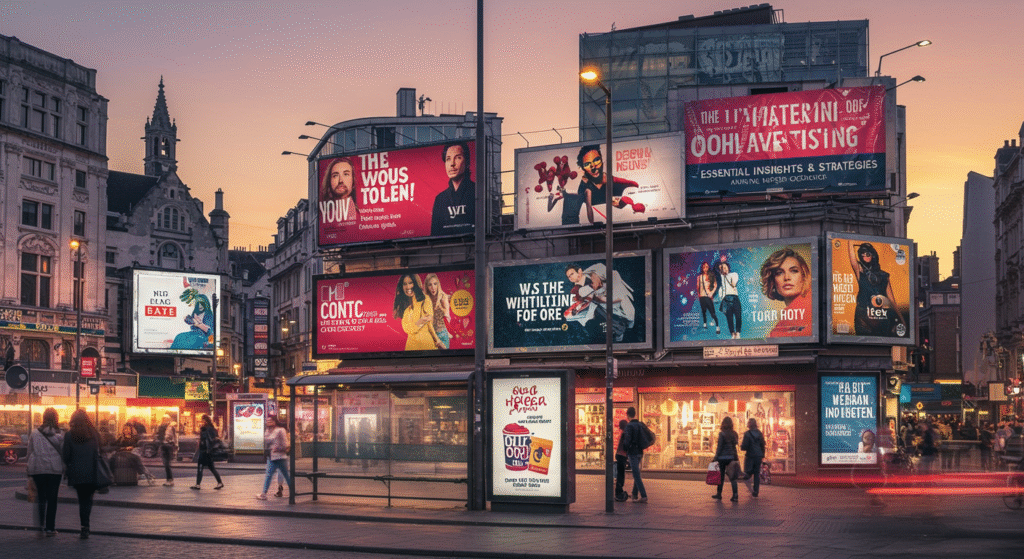
Out of Home (OOH) media advertising remains one of the most powerful ways for brands to connect with audiences beyond their homes. From billboards on busy highways to posters at bus stops and digital screens in shopping malls, OOH advertising offers visibility, credibility, and reach that digital-only campaigns can’t fully replicate.
In today’s competitive market, mastering Out of Home media advertising requires a clear understanding of its benefits, challenges, and strategies. This article explores how businesses can maximize OOH media for brand growth and long-term success.
1. What Is Out of Home Media Advertising?
Out of Home (OOH) media advertising refers to any promotional content displayed outside consumers’ homes. Unlike TV, radio, or digital ads that people consume indoors, OOH reaches them during travel, work, shopping, or leisure.
Examples of OOH media include:
- Billboards (static and digital)
- Transit ads (buses, taxis, train wraps)
- Street furniture (bus shelters, benches, kiosks)
- Place-based media (malls, airports, stadiums)
- Digital OOH screens (LED displays, interactive panels)
OOH media advertising works by capturing attention where people least expect it, creating lasting brand impressions.
2. Advantages of Out of Home Media Advertising
Businesses choose OOH advertising because it delivers unique advantages that complement digital and traditional campaigns:
a.
High Visibility
OOH ads are placed in high-traffic areas, ensuring repeated exposure to thousands or even millions daily.
b.
Brand Credibility
Billboards and transit ads signal brand authority, making businesses appear established and trustworthy.
c.
Wide Reach
Unlike online ads limited by algorithms, OOH naturally reaches diverse audiences.
d.
Cost-Effectiveness
Measured by cost-per-thousand impressions (CPM), OOH is one of the most affordable forms of advertising.
e.
Digital Integration
Modern digital OOH allows dynamic, real-time updates and can sync with online campaigns for maximum impact.
3. Essential Insights into OOH Media Advertising
To fully understand Out of Home advertising, businesses should consider these insights:
- Location is everything: A prime billboard spot or transit route can determine campaign success.
- Simplicity works best: OOH ads should be bold, clear, and quickly understood.
- OOH complements digital: Pairing physical exposure with online targeting strengthens brand recall.
- Measurement is evolving: With geofencing and mobile tracking, advertisers can now measure OOH impact more accurately.
OOH is no longer just about large signs — it’s about blending creativity, technology, and placement for stronger results.
4. Strategies for Mastering Out of Home Media Advertising
To get the most from OOH, businesses should follow proven strategies:
a.
Define Campaign Objectives
Clarify whether the goal is to build awareness, drive foot traffic, or promote a product launch.
b.
Select the Right Formats
Choose between billboards, transit, or digital OOH based on audience habits and location relevance.
c.
Invest in Creative Design
Keep messaging short, visuals bold, and calls-to-action clear. Strong design is the heart of OOH effectiveness.
d.
Leverage Data and Technology
Use audience analytics, heat maps, and mobile data to place ads where they’ll generate maximum impressions.
e.
Integrate with Digital Campaigns
Sync OOH with social media, search ads, and influencer campaigns to amplify visibility.
f.
Measure Performance
Track impressions, footfall lift, and mobile engagement to refine campaigns over time.
5. Common Challenges in OOH Advertising

While effective, OOH campaigns face challenges that businesses must navigate:
- High competition for premium locations: Popular billboard spaces get booked months in advance.
- Creative limitations: Messages must be extremely concise due to short viewer attention.
- Measurement difficulties: Although improving, tracking ROI can still be less precise than digital ads.
- Weather and environment factors: Outdoor conditions can affect visibility and effectiveness.
Overcoming these challenges requires flexibility, smart planning, and ongoing collaboration with media owners.
6. The Future of Out of Home Media Advertising
OOH is evolving rapidly with technology and shifting consumer behavior. The future promises exciting opportunities:
- Digital OOH growth: More screens, dynamic displays, and real-time updates.
- Programmatic buying: Automated OOH ad purchases similar to online ad exchanges.
- Data-driven targeting: Integration of mobile and geolocation data to serve ads at the right time and place.
- Interactive experiences: AR/VR and QR codes will transform static ads into engaging experiences.
- Sustainability focus: Eco-friendly materials and energy-efficient screens will dominate future OOH campaigns.
These advancements will make OOH not just a visibility tool but an interactive, measurable, and future-ready medium.
Conclusion
Out of Home media advertising remains one of the most impactful ways to reach consumers at scale. With its high visibility, credibility, and ability to complement digital strategies, OOH continues to be a cornerstone of successful campaigns.
By focusing on prime locations, bold creativity, clear objectives, and digital integration, businesses can maximize OOH results while preparing for the future of programmatic and data-driven advertising.
In a crowded market, mastering Out of Home media advertising isn’t just about buying billboard space — it’s about crafting strategic, memorable campaigns that stay with audiences long after they’ve left the street.